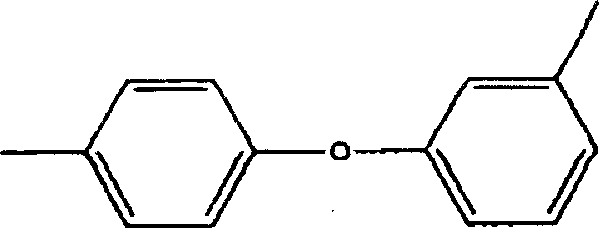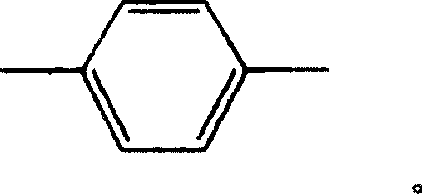Carbon nanotube coated with aromatic condensation polymer
A technology of carbon nanotubes and aromatics, applied in the treatment of dyed polymer organic compounds, single-component polycarbonate artificial filaments, single-component polyester artificial filaments, etc., can solve environmental pollution, difficult separation, acyl Problems with high reactivity of halides
- Summary
- Abstract
- Description
- Claims
- Application Information
AI Technical Summary
Problems solved by technology
Method used
Image
Examples
Embodiment
[0257] Below, the method of the present invention is further detailed and specifically described through examples. However, these examples do not limit the scope of the present invention in any way.
[0258] (1) (centrifugation): Performed using a personal centrifuge manufactured by MILLIPORE.
[0259] (2) Determination of average particle size
[0260] The average particle diameter of the carbon nanotubes in the dispersion solvent was measured by a light scattering method using microtrack MT3000 manufactured by Nikkiso Co., Ltd. In addition, the average particle diameter of an untreated product was measured by performing ultrasonic treatment for 1 minute in N-methyl-2-pyrrolidone (it may be called NMP hereinafter) before measurement.
[0261] (3) Average diameter and average aspect ratio of carbon nanotubes
[0262] Using Hitachi H-800, measure the TEM (transmission electron microscope) photograph, measure the diameter and length of all carbon nanotubes that can be observe...
reference example 1
[0268] Reference Example 1: Synthesis of Single-walled Carbon Nanotubes
[0269] Y-type zeolite powder (manufactured by Tosoh; HSZ-320NAA) was used as a porous carrier, iron acetate and cobalt acetate were used as catalyst metal compounds, and the Fe / Co catalyst was supported on the zeolite. The supporting amount of the catalyst was adjusted to 2.5% by weight. Afterwards, the catalyst powder was placed on a quartz dish and placed in a quartz tube of a CVD apparatus for evacuation, and the temperature was raised from room temperature to 800° C. while introducing Ar gas at a flow rate of 10 mL / min. After reaching the specified 800°C, ethanol vapor was introduced at a flow rate of 3000mL / min, and kept under an Ar / ethanol atmosphere for 30 minutes. The obtained black product was analyzed by laser Raman spectroscopy and a transmission electron microscope, and it was confirmed that single-walled carbon nanotubes were formed. Then, after immersing the resulting product (single-wall...
reference example 2
[0270] Reference Example 2: Synthesis of Multiwalled Carbon Nanotubes
[0271] The reaction was carried out in the same manner as in Reference Example 1 except that the reaction temperature in the CVD apparatus was set to 600° C., and it was confirmed that multiwalled carbon nanotubes were produced. After refining and removing the zeolite and the metal catalyst in the same manner as in Reference Example 1, graphitization was performed using an electric sintering furnace (manufactured by Kurata Giken Co., Ltd., SCC-U-90 / 150). Firstly, the temperature is raised from room temperature to 1000°C in 30 minutes under vacuum, and then the temperature is raised from 1000°C to 2000°C in 30 minutes under an argon atmosphere and a pressure of 5 atm, and then the temperature is raised from 2000°C to 2800°C in 1 hour for sintering, thus obtaining Graphitized multilayer carbon nanotubes. Observation of the obtained carbon nanotubes by TEM revealed that the average diameter was 58 nm and the...
PUM
| Property | Measurement | Unit |
|---|---|---|
| particle size | aaaaa | aaaaa |
| particle size | aaaaa | aaaaa |
| diameter | aaaaa | aaaaa |
Abstract
Description
Claims
Application Information
 Login to View More
Login to View More - R&D Engineer
- R&D Manager
- IP Professional
- Industry Leading Data Capabilities
- Powerful AI technology
- Patent DNA Extraction
Browse by: Latest US Patents, China's latest patents, Technical Efficacy Thesaurus, Application Domain, Technology Topic, Popular Technical Reports.
© 2024 PatSnap. All rights reserved.Legal|Privacy policy|Modern Slavery Act Transparency Statement|Sitemap|About US| Contact US: help@patsnap.com










